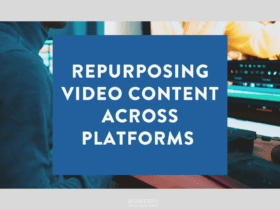For brands looking to harness the power of video content, the question of whether to create long-form or short-form videos is a complex one.
With audiences consuming video content across multiple devices, platforms, and formats, it’s important to understand how to maximize the impact of your video strategy.
So, which is better for your brand: short-form or long-form videos? The answer is that both formats have advantages and can work well together.
Which one works best for brands?
Short-Form Videos: The Breakout Format
Short-form vertical videos have exploded in popularity over the past few years, with platforms like TikTok, Instagram Reels, and YouTube Shorts leading the charge. But what is it about these bite-sized videos that makes them so appealing to viewers?
For one, short-form videos are perfect for mobile consumption, with the vertical format optimized for viewing on smartphones. They’re also great for capturing attention quickly, as viewers can quickly scroll through a feed and engage with short videos that catch their eye.
YouTube Shorts, for example, launched in 2021 and has already become home to 1.5 billion monthly active users and earns more than 30 billion daily views. While it’s a mobile destination, Shorts also fuels discovery across formats and screens. Creators who upload both long form video and Shorts on YouTube see longer overall watch time and subscriber growth. According to YouTube’s latest Culture & Trends Report, 59% of Gen Z — the world’s largest generation — agree that they use short-form video apps to discover things they then watch longer versions of.
Brands can tap into the power of short form videos by experimenting with multiple formats, using built-in effects and filters, and capturing emotional content. By doing so, brands can create engaging and shareable content that appeals to their target audience.
As brands experiment with short form video, they should consider the automated tools that make creation easy. These tools can be used to create professional-looking and highly engaging videos, even if you have little video production experience.
Long-Form Videos: The Power of Storytelling
While short-form videos are great for capturing attention quickly, long-form videos offer brands the opportunity to tell a more in-depth story and connect with their audience on a deeper level. In fact, TV is YouTube’s fastest-growing screen today, with watch time continuing to level up.
As of January 2022, on average, viewers are watching over 700 million hours of YouTube content on TV daily. The growing popularity of connected devices tells us that the old distinctions between network TV, digital, streaming, and mobile video are fading.
For brands, long-form videos can be a powerful tool for building trust and loyalty with their audience. By telling a compelling story that resonates with viewers, brands can create a deeper emotional connection and establish themselves as a thought leader in their industry.
However, it’s important to remember that attention spans are getting shorter, and viewers may not have the patience for lengthy videos. Brands should aim to create long-form videos that are engaging and captivating from start to finish, with a clear narrative arc and plenty of visual interest to keep viewers hooked.
Long-form videos allow brands to tell more complex and nuanced stories, which can be particularly useful when communicating brand values or explaining complex products or services.
The Multiformat Approach: Why Not Both?
Brands should consider using short form videos as a way to experiment with new approaches, build engagement, and expand their reach.
Long form videos, on the other hand, are better suited for telling complex stories and building a deeper connection with viewers. Ultimately, both formats have their place in a comprehensive video strategy.
Brands can also look to creators for inspiration, as they have a wealth of experience experimenting with different video formats and lengths.
In conclusion, choosing between short-form and long-form videos ultimately depends on your brand’s goals and audience. Brands that want to build engagement with a younger demographic should experiment with short form videos, while those that want to develop a deeper connection with viewers should focus on long form content.
By incorporating both formats into their video strategy, brands can maximize the impact of their video content and build a loyal audience of engaged viewers.
Enjoyed this article? Enter your email below for social media tips & tricks delivered to your inbox every Monday morning.









LET’S CONNECT